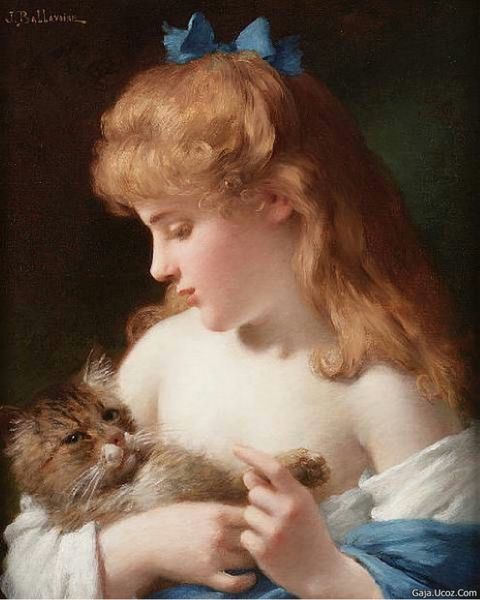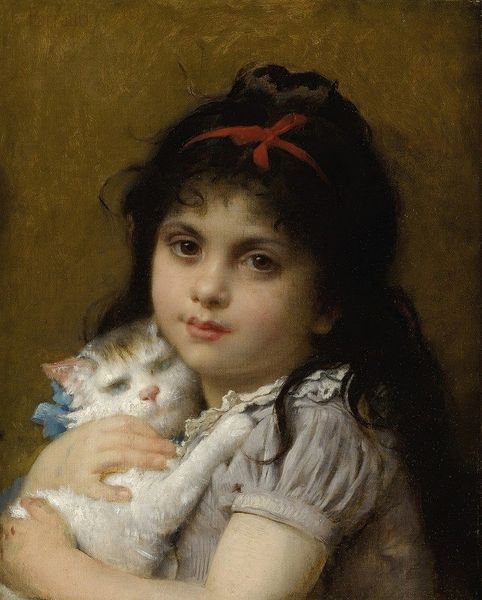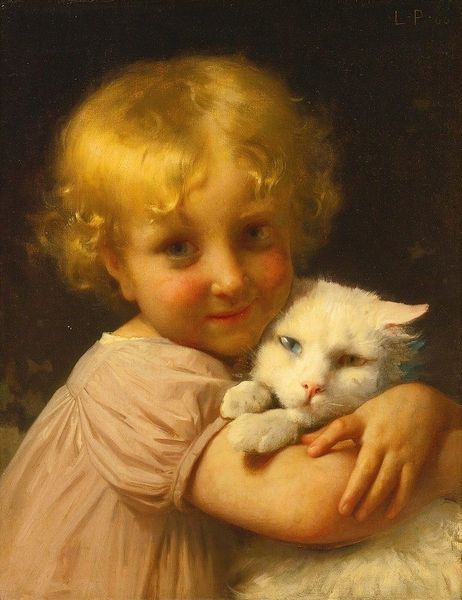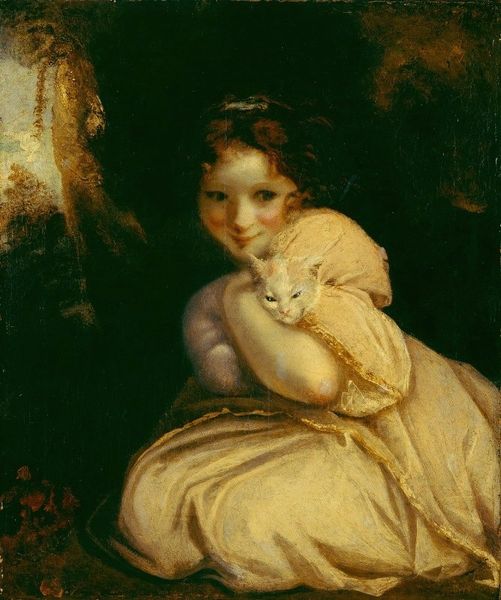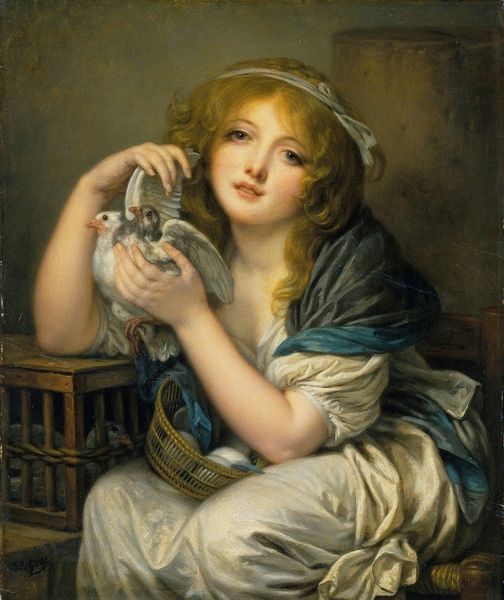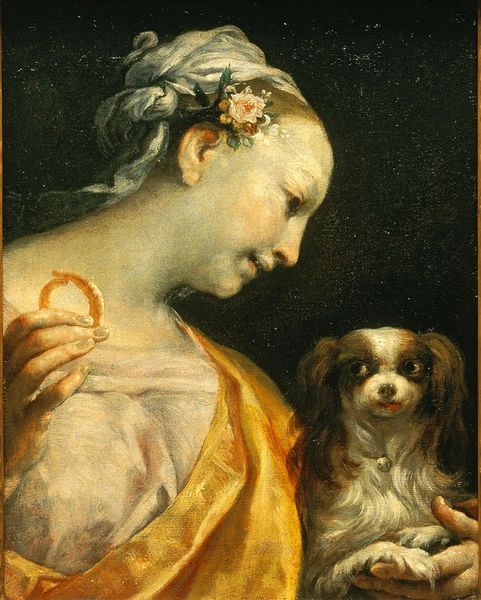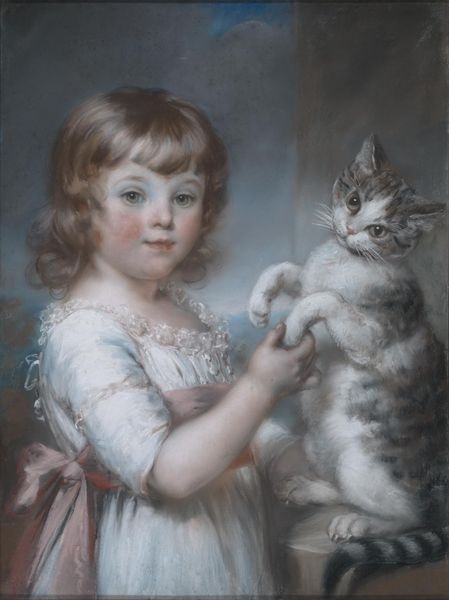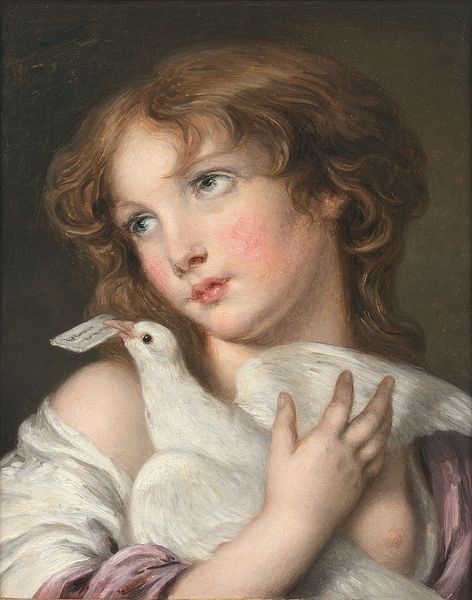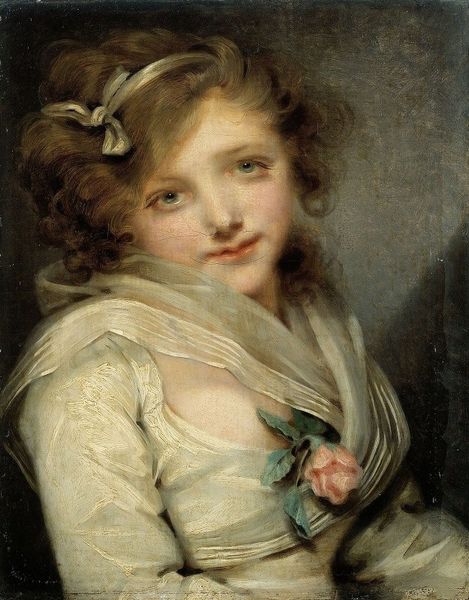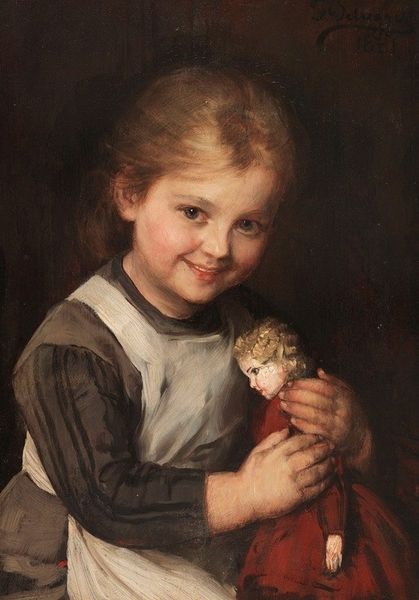
painting, oil-paint
#
portrait
#
figurative
#
character portrait
#
painting
#
oil-paint
#
portrait reference
#
portrait head and shoulder
#
animal portrait
#
animal drawing portrait
#
portrait drawing
#
genre-painting
#
facial portrait
#
portrait art
#
fine art portrait
#
rococo
#
digital portrait
Copyright: Public Domain: Artvee
Editor: So here we have *Jeune fille au chat*, attributed to Jean-Baptiste Greuze. It looks like it’s painted with oils, and what immediately grabs me is how tender it feels—this young woman cradling a little kitten. How do you interpret the social significance of a piece like this? Curator: It’s interesting you picked up on the tenderness. Greuze was highly celebrated, and sometimes critiqued, for these sentimental depictions. Consider the context: 18th-century France, the rise of bourgeois values. He catered to a market that valued displays of virtuous domesticity. What does showing a young girl caring for a vulnerable animal suggest about ideal femininity at that time? Editor: That she’s kind, nurturing... maybe it's about moral instruction, too? A reflection of the social expectations of women? Curator: Precisely. And it goes deeper. Genre paintings like this allowed viewers to reflect on their own lives and moral standing. It wasn’t just about surface beauty; it was about presenting aspirational models of behaviour, aligning with Enlightenment ideas of reason and moral progress influencing the culture. Also, how might the rise of Salons – publicly accessible art exhibitions – affect the accessibility and perception of art like this? Editor: That’s true, the salon system gave this more intimate scene a wider audience, didn’t it? Were these paintings, then, partly propaganda, reinforcing societal norms? Curator: The line between genuine sentiment and social conditioning is often blurred. Greuze gives us this image, the public receives and interprets, the critics weigh in, and his patrons approve or disapprove by buying or refusing to buy. Consider how different political regimes utilize visual messaging and understand Greuze as just one example within that legacy. What new things do you notice now? Editor: Thinking about its audience makes me reconsider that feeling of innocence; the composition, her gaze, is more calculated than I first thought. Curator: Precisely. Seeing through a social lens changes everything. It opens up avenues for deeper engagement with artworks. Editor: It makes it more engaging, for sure, to look beyond the aesthetic to question what purpose art like this served in its day, and the ongoing implications and questions about representation of women. Thank you.
Comments
No comments
Be the first to comment and join the conversation on the ultimate creative platform.
